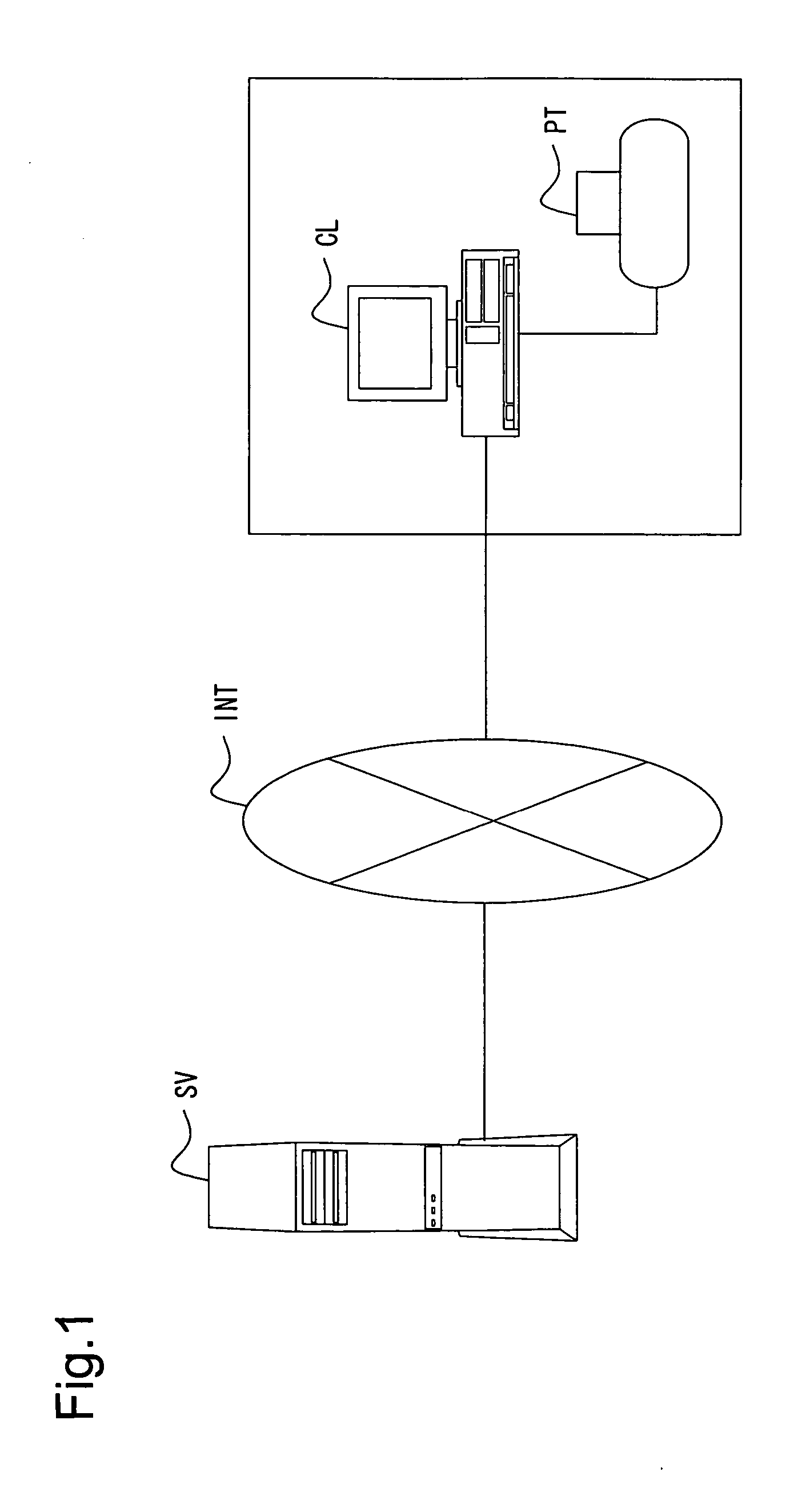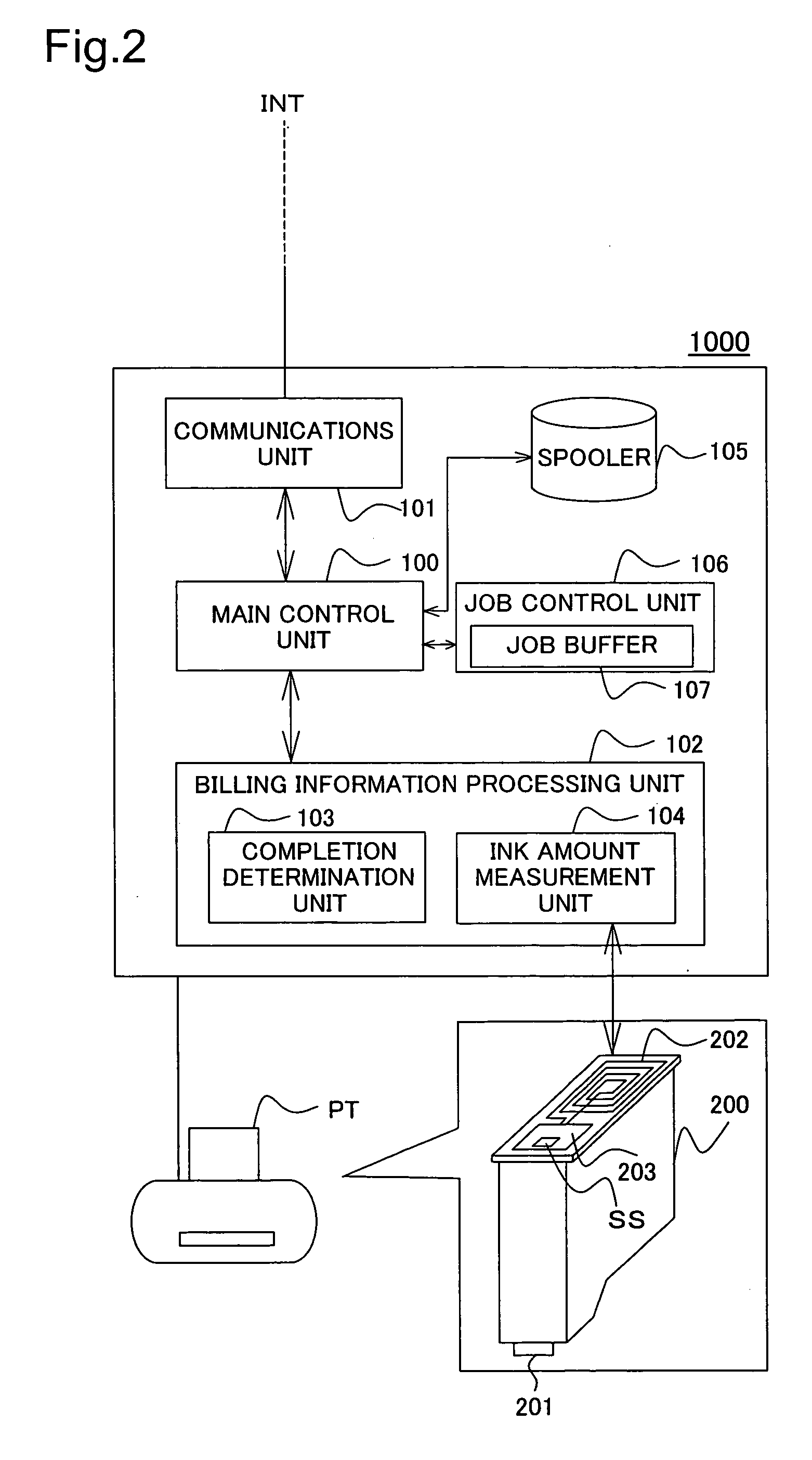Monitoring printer via network
a network and printer technology, applied in the direction of digital output to print units, instruments, data processing applications, etc., can solve the problem of discrepancy between the estimated consumption amount and the actual consumption amount of an expendable, and achieve the effect of quick calculation of usage charges and improved measurement accuracy of consumption of an expendabl
- Summary
- Abstract
- Description
- Claims
- Application Information
AI Technical Summary
Benefits of technology
Problems solved by technology
Method used
Image
Examples
embodiment 1
[0046] A. Embodiment 1
[0047] A1: System Overview
[0048] A2: Internal Arrangement
[0049] A3: Billing Information Notification Process
[0050] A4: Sheet Count Sensing Process
[0051] A5: Ink Amount Measuring Process
embodiment 2
[0052] B. Embodiment 2
[0053] B1: Information Amount Sensing Process [0054] C. Embodiment 3
[0055] C1: Charge Calculation Process
[0056] D. Variations
[0057] A1: System Overview
[0058]FIG. 1 is a simplified illustration of a monitoring system by way of a first embodiment. As shown in the drawing, an ink jet printer PT has a local connection to a client computer CL; the client computer CL connected to a central server SV (hereinafter “server SV”) via the Internet INT. A monitoring system is set up for the client computer CL. In this embodiment, the user is charged according to amounts of expendables consumed by printer PT.
[0059] Client computer CL queues a print job onto the spooler corresponding to the printer PT. When the queued print job has been arranged in print order, it is sent to the printer PT, which commences printing. Client computer CL performs monitoring of completion of printing of the print job, measurement of the amount of ink used by printer PT, and acquisition of th...
embodiment 3
[0095] C. Embodiment 3
[0096] C1: Charge Calculation Process
[0097] In Embodiment 1 and Embodiment 2, billing calculations are performed by the server SV, on the basis of information provided by notification from the monitoring system 1000. In Embodiment 3, billing calculations are performed by the monitoring system 1000, which then notifies the server SV of the calculated charges. The system overview in this embodiment is similar to that in Embodiment 1 and Embodiment 2. However, the billing information processing unit 102 performs the billing calculations on the basis of information received from the completion determination unit 103 and ink amount measurement unit 104.
[0098]FIG. 7 is flowchart of a charge calculation process in Embodiment 3. The client CL initiates the process at the point in time that a print job is issued. The processes of Step S201-Step S204 are similar to the process of Step S10-Step S13 of Embodiment 1, and need not be described here.
[0099] On the basis of ...
PUM
 Login to View More
Login to View More Abstract
Description
Claims
Application Information
 Login to View More
Login to View More - R&D
- Intellectual Property
- Life Sciences
- Materials
- Tech Scout
- Unparalleled Data Quality
- Higher Quality Content
- 60% Fewer Hallucinations
Browse by: Latest US Patents, China's latest patents, Technical Efficacy Thesaurus, Application Domain, Technology Topic, Popular Technical Reports.
© 2025 PatSnap. All rights reserved.Legal|Privacy policy|Modern Slavery Act Transparency Statement|Sitemap|About US| Contact US: help@patsnap.com



